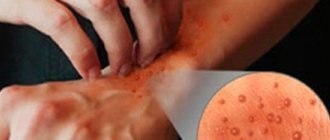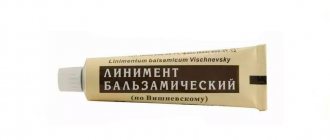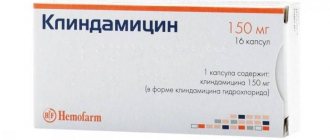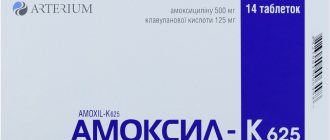With the onset of warm spring days, we feel the effects of cold weather, lack of sunlight and inadequate amounts of vitamins. To maintain normal health, a person needs calcium. This is the basis for the process of formation and growth of bone tissue and new cells. The substance is characterized by antimicrobial and antiallergic properties, reduces intoxication.
Compound
One tablet may contain 250 or 500 mg of active substance.
Auxiliary components: potato starch, anhydrous silicon dioxide in colloidal form, calcium stearate.
The concentration of the active substance in 1 ml of solution is 95.5 mg. 1 ml of the drug contains 8.95 mg of total calcium (Ca2+), which in terms of the theoretical content of calcium gluconate is 100 mg/ml. The solution contains calcium sucrose and water as auxiliary components.
Release form, packaging and composition of the product
In the pharmaceutical product of the same name, Calcii gluconas is the only active ingredient. The chemical compound is a synthesized calcium salt based on gluconic acid (C12H22CaO14).
Starch, calcium stearate and silica are used as excipients.
In the final 10% chemical solution, the content of the main active substance will be 1 gram per 10 grams of the drug.
The solution is sold in pharmacies in sealed ampoules of 1 or 5 milliliters, ten units in each pack. The drug is packaged in blister packs and equipped with an ampoule knife. The liquid has neither color nor odor.
Pharmacodynamics and pharmacokinetics
Calcium gluconate - what is it?
Calcium gluconate is a mineral supplement that is used to treat conditions caused by calcium deficiency in the body. The calcium content in the preparation is 9%. The INN (Calcium gluconate) was assigned to the active substance based on data from the European Pharmacopoeia (Ph.Eur.).
the myocardium cannot function normally , contraction of smooth and skeletal muscles, and blood clotting processes; Without them, bone tissue cannot form normally, and other organs and systems cannot function.
The gross formula of calcium gluconate is C12H22CaO14.
Pharmacodynamics
In many diseases, the concentration of Ca ions in the blood decreases; at the same time, severe calcium deficiency contributes to the development of tetany. The drug not only prevents the occurrence of hypocalcemia , but also reduces the permeability of vascular walls, relieves inflammation, has an antiallergic and hemostatic effect , and reduces exudation.
Ca ions are a plastic material for teeth and skeleton; many enzymatic processes occur with their participation; they are responsible for regulating the permeability of cell membranes and the speed of transmission of nerve impulses.
They are needed for the process of neuromuscular transmission and maintaining the contractile function of the heart muscle. If we compare calcium gluconate with calcium chloride, the latter has a more pronounced local irritating effect.
Pharmacokinetics
When taken orally, the substance is partially absorbed, mainly in the small intestine. TCmax - 1.2-1.3 hours. T1/2 of ionized Ca from blood plasma - from 6.8 to 7.2 hours. Penetrates into breast milk and through the placental barrier. It is excreted from the body mainly by the kidneys, but also with the contents of the intestines.
Compatibility with other drugs
Taking Ca with some drugs promotes their complete absorption, while with others, on the contrary, it prevents or slows down absorption.
It is recommended to take gluconate along with vitamin D, which improves the absorption of the drug. Vitamin deficiency is associated with a lack of calcium and magnesium. When the body lacks magnesium, Ca is deposited not in the intestines, but on the walls of the arteries. Kidney failure inhibits the transition of the vitamin to its active form, which prevents calcium from being completely absorbed.
Along with vitamin D, adults also need to take magnesium supplements. The deficit now accounts for 80-85% of the population. It is possible that kidney stones are the result of insufficient magnesium. Reception should begin 2-3 hours after taking calcium.
Everyone's favorite carbonated drinks reduce the level of phosphorus in the body. This negatively affects metabolic processes and Ca levels, especially in adolescents. Coffee also leaches the vitamin, but in smaller proportions; one cup of coffee removes 2-3 mg of calcium in the urine.
Calcium prevents iron from being absorbed, so there should be an interval of 2-3 hours between taking Ca and iron. Excess iron is a direct path to the myocardium.
Oxalic and phytic acids interfere with the absorption of the drug.
Taking Ca is contraindicated if the patient is prescribed diuretics for heart failure or high blood pressure. Combining diuretics leads to an increase in calcium levels in the blood.
Doctors advise taking drugs incompatible with calcium separately, in different courses.
Indications for use of Calcium gluconate
What is Calcium Gluconate tablets for?
Tablets are recommended for conditions accompanied by hypocalcemia, increased permeability of cell membranes, and disturbances in the conduction of nerve impulses in muscle tissue.
Doctors answer the question “what is calcium gluconate used for?” answer that the use of the drug is advisable for:
- hypoparathyroidism ( osteoporosis , latent tetany);
- vitamin D metabolism ( spasmophilia , rickets , osteomalacia );
- hyperphosphatemia in patients with chronic renal failure;
- increased need for Ca ( pregnancy , breastfeeding , periods of intensive growth in children/adolescents);
- insufficient Ca content in the diet;
- bone fractures;
- Ca metabolism disorders in the postmenopausal period;
- conditions that are accompanied by increased excretion of Ca (chronic diarrhea , prolonged bed rest; long-term treatment with diuretics , corticosteroids or antiepileptic drugs );
- poisoning with oxalic acid, Mg salts, soluble salts of fluoric acid (the advisability of using the product as an antidote is due to the fact that, interacting with these substances, Ca gluconate forms non-toxic Ca oxalate and Ca fluoride).
As an addition to the main treatment, calcium gluconate tablets are used as an allergy remedy for itchy dermatoses , febrile syndrome , urticaria , serum sickness , angioedema ; for bleeding of various origins, nutritional dystrophy , bronchial asthma , pulmonary tuberculosis , hepatitis , eclampsia , nephritis , toxic liver damage .
Why are calcium gluconate injections used?
Calcium gluconate in ampoules is prescribed for certain pathologies of the parathyroid glands , conditions that are accompanied by increased excretion of Ca from the body, as an adjuvant for allergies , as well as for allergic complications of treatment with other drugs, to reduce vascular permeability in various types of pathological processes, for nephritis , eclampsia , liver intoxication , hyperkalemia , parenchymal hepatitis , hyperkalemic form of periodic paralysis ( paroxysmal myoplegia ), as a hemostatic agent.
Indications (intravenously/intramuscularly) for administration of the drug are also poisoning with soluble salts of fluoric acid, oxalic acid or Mg salts, for skin diseases ( psoriasis, itching, eczema ).
In some cases, Calcium gluconate is used during autohemotherapy . This method of treatment has proven itself well for skin diseases, furunculosis , recurrent colds , diabetes , rheumatism , allergies , and during the recovery period after serious illnesses.
10 ml of calcium gluconate solution is injected into the patient's vein, and then blood is immediately taken from the vein and transferred back in the form of a subcutaneous injection or injection into the gluteal muscle.
What is a hot shot?
Injections of the drug are also known as “hot injections of calcium gluconate.” In fact, the solution is administered heated only to body temperature.
A hot injection is called a hot injection because of the subjective sensations that arise in the patient: after the injection, there is usually a feeling of warmth spreading throughout the body, and sometimes a fairly strong burning sensation.
Calcium gluconate for allergies
Doctors have proven that one of the causes of allergies may be a severe calcium deficiency in the body. It is with Ca deficiency that most allergic reactions in children are associated: the child’s body grows very rapidly, and as a result, the Ca content in all its tissues decreases.
In addition, factors that contribute to the formation of Ca deficiency are excess vitamin D in the body and teething.
, calcium gluconate is often used as one of the methods for preventing and treating allergies
With sufficient calcium intake into the body, the permeability of the vascular walls decreases, and the penetration of allergens into the systemic bloodstream becomes more difficult. This means that an increase in Ca concentration is accompanied by a decrease in the likelihood of an acute immune reaction.
Calcium gluconate is used in combination with antihistamines . The drug is prescribed, among other things, to eliminate side effects caused by taking other medications.
Studies have shown that, as a source of calcium alone for the body, the calcium salt of gluconic acid is the least active, however, calcium gluconate is best suited allergic diseases
The tablets are taken orally before meals. The dose depends on the characteristics of the disease and the age of the patient.
In addition, in some cases, the patient may be prescribed intravenous administration of the solution. allergies , calcium gluconate is not recommended to be administered intramuscularly or subcutaneously (especially to children).
The course of treatment for allergies usually lasts from 7 to 14 days.
Calcium gluconate for allergies (reviews are eloquent confirmation of this) is a time-tested and quite effective remedy, which, on top of everything, is almost impossible to overdose on.
Maximum absorption of calcium is ensured with the participation of vitamin D , amino acids (in particular L-arginine and lysine) and Ca-binding protein.
Indications
Calcium gluconate can be prescribed to people both for therapy and as prophylaxis for the following conditions and diseases:
- Damage to the nervous system, which is caused by a lack of calcium in the body.
- Osteoporosis.
- Fractures.
- Dental diseases.
- Rickets (a disease of children with impaired bone formation and insufficient bone mineralization).
- Diseases of the endocrine system.
- "Interesting position" of a woman.
In addition to these indications, calcium gluconate is also used for the following conditions:
- Lactation (the process of formation, accumulation and periodic excretion of milk in humans and mammals).
- Food poisoning.
- Diarrhea (a pathological condition in which the patient experiences frequent bowel movements, and the stool becomes watery).
- Forced bed rest.
- Hypocalcemia (a condition in which the concentration of calcium in the blood is below standard values).
Contraindications
Contraindications to the use of solution and tablets:
- intolerance to the components of the drug;
- severe hypercalciuria ;
- tendency to thrombosis;
- hypercoagulability;
- severe atherosclerosis ;
- calcium nephrourolithiasis;
- increased blood clotting;
- sarcoidosis;
- severe renal failure;
- period of treatment with cardiac glycosides (for example, digitalis preparations).
Buy calcium gluconate in ampoules or tablets, is there a difference?
Hemorrhoids kill the patient in 79% of cases
Many patients are convinced that the drug, regardless of the form of release, acts the same. Remember: there are differences between the indications for using calcium gluconate (tablets) and calcium gluconate (injections).
Typically, 1 tablet contains 500 mg of active ingredient. But you can also find forms with only 250 mg of the main substance. The required dosage, based on your medical history, can only be determined by a specialist. Infants under 12 months are prescribed 1500 mg per day in 3 divided doses. Before giving medicine to your child:
- Grind the tablet thoroughly until a homogeneous powder is formed.
- Place the powder in a small volume of expressed breast milk or formula.
- Stir the resulting drink.
- Wait until the product is completely dissolved.
Children 2 years of age also take the product 3 times a day, the daily dose is 3 g; starting from 5 years, you can increase the amount to 1.5 g per dose. Children are prescribed calcium supplements in tablets, since their skin is more sensitive, and there is a risk of soft tissue necrosis in the event of an intravenous or intramuscular injection. Adult patients need to take 1 to 3 g per day. It is recommended to take the tablet with a glass of water (you can also take milk) to prevent the formation of kidney stones.
Intravenous hot injections of calcium gluconate are done very slowly, since the substance is instantly absorbed into the blood. A single dose is 500 mg, with drip administration - 1 g. If, in the event of a medical error, the drug begins to flow past the vein, loss of soft tissue around the injection site is possible.
A 10 ml ampoule contains 1 g of calcium gluconate - this is the normal dose for a one-time administration according to the instructions. This amount of medication is administered intramuscularly every other day, although doses may vary depending on the severity of the disease.
Oral (tablet) intake of calcium gluconate will not have the expected effect if:
- you have a severe allergic reaction on the verge of anaphylactic shock;
- bleeding of different locations began;
- intoxication with magnesium salts and fluoric acid occurs.
But in the listed situations, the first aid kit for emergency measures includes ampoules with this medicine.
Side effects
The drug is usually well tolerated, but in some cases the following disorders are possible:
- bradycardia;
- hypercalciuria , hypercalcemia ;
- nausea, vomiting, stool disorders ( constipation /diarrhea), epigastric pain;
- formation of calcium stones in the intestines (with long-term use of high doses of the drug);
- impaired renal function ( swelling of the lower extremities, frequent urination);
- hypersensitivity reactions.
bradycardia , diarrhea, a feeling of heat in the mouth and then throughout the body, and changes in the skin may sometimes be observed These reactions pass quite quickly and do not require special treatment.
sweating , vomiting, arterial hypotension , and collapse (in some situations, lethal) may occur The result of extravasal penetration of the solution can be calcification of soft tissues.
In very rare cases, allergic and anaphylactic reactions .
When calcium gluconate is administered intramuscularly, local irritation and tissue necrosis .
pharmachologic effect
Calcium gluconate has a multidirectional pharmacological effect that replenishes calcium deficiency:
- antihistamine;
- anti-inflammatory;
- hemostatic (hemostatic);
- detoxification;
- reducing fragility and vascular permeability.
The substance is directly involved in the mechanisms of synaptic transmission, muscle contraction (skeletal, smooth), the functioning of the myocardium (the muscular middle layer of the heart), blood coagulation, bone formation, and a number of others.
Instructions for use of Calcium gluconate
Calcium gluconate tablets, instructions for use
The tablets are taken before meals, after crushing or chewing.
A single dose for patients over 14 years of age is from 1 to 3 g (2-6 tablets for each dose). Patients 3-14 years old are given 2-4 tablets. 2-3 rubles/day.
Treatment lasts from 10 days to 1 month. The duration of the course is determined by the attending physician individually depending on the patient’s condition.
The permissible upper limit of the daily dose for elderly patients is 4 tablets. (2 g).
Ampoules Calcium gluconate, instructions for use
Calcium gluconate is administered intravenously or intramuscularly.
For patients over 14 years of age, injections are given once a day. A single dose is from 5 to 10 ml of solution. Depending on the patient’s condition, injections can be given daily, every other day or once every two days.
For children from birth to 14 years of age, the dose of 10% calcium gluconate solution intravenously varies from 0.1 to 5 ml.
Before administration, the drug should be warmed to body temperature. The medicine should be administered slowly - over 2-3 minutes.
To administer less than one milliliter of solution, it is recommended to dilute a single dose to the required volume (syringe volume) with a 5% glucose solution or 0.9% NaCl solution.
Rules for using injections
For all injections, both general rules and specific ones apply, which depend on the characteristics of the administration of the drug.
How to administer intravenously
When prescribing intravenous calcium injections, it is very important to follow all the rules of asepsis. This will prevent the introduction and development of various infections. Before using the drug, the injection site must be disinfected with alcohol or hydrogen peroxide.
When drawing a solution for intravenous injection into a syringe, you need to expel all bubbles from it. Even a small air bubble entering a vein will lead to blockage of the vein and the death of the patient.
Calcium gluconate is administered very slowly over 2-3 minutes. Giving the medication too quickly can lead to low blood pressure, arrhythmia, and death.
At the end of the manipulation, the patient needs to squeeze a cotton swab soaked in alcohol or hydrogen peroxide in the elbow bend to prevent bruising at the injection site.
Intramuscular calcium gluconate injections
Calcium gluconate injections are injected intramuscularly in accordance with the following rules:
- The drug can be injected exclusively into the gluteal muscle. This place, due to a fairly thick layer of muscle, allows doctors to inject patients without pain;
- Before the injection, you need to thoroughly treat the surface of the skin with an antiseptic. Otherwise, infection may occur with dangerous consequences, including tissue necrosis;
- When filling the syringe, make sure that no alcohol remains in it. It causes the formation of sediment;
- as with intravenous administration, it is important to observe the rate of delivery of the drug so that the injection takes place without undesirable consequences.
Dosage regimen and overdose
During a course of treatment with calcium gluconate, strict monitoring of the level of electrolytes in the blood is carried out in order to timely track the moment when injections should be stopped and not to increase the electrolyte level above normal. Such monitoring will help avoid overdose, which manifests itself in the following symptoms:
- disorders in the gastrointestinal tract. May manifest as nausea, vomiting, and constipation;
- sharp abdominal pain;
- muscle weakness;
- frequent urination;
- increased blood pressure;
- the person experiences extreme thirst, dry mouth;
- the patient becomes overly irritable and gets tired quickly.
An overdose of calcium gluconate leads to the formation of kidney stones.
In order to avoid such consequences, patients are prescribed injections of 5-10 milliliters of a 10 percent solution daily, every other day, and sometimes every two days.
Hypercalcemia (overdose) is an indication for the use of infusion of calcitonin (5-10 IU per kilogram of body weight), diluted in a 0.9 percent sodium chloride solution.
What is a “hot” injection
A “hot” injection is nothing more than the injection of a calcium gluconate solution into a vein. In fact, it's just an expression. In no case is the drug heated to a hot state, it is heated to the patient’s body temperature, while the patient himself feels the heat spreading throughout the body. That’s why calcium gluconate injections are called “hot”.
Drug interactions
When used once, the drug limits the activity of calcium channel blockers. Together with verapamil, calcium gluconate significantly reduces the hypotensive activity of the latter, but does not affect the antiarrhythmic effect. The use of the drug simultaneously with cholestyramine reduces the absorption of calcium in the gastrointestinal tract. Increases the toxicity of quinidine when administered synchronously, and also slows down intraventricular conduction.
Calcium gluconate is incompatible with carbonates, salicylates, sulfates, and ethanol. As a result of the interaction of these substances, insoluble calcium salt complexes are formed. The same applies to tetracycline antibiotics.
Terms and conditions of storage
The drug can be stored in a dry, dark place at a temperature not exceeding 25 degrees Celsius. The solution for intramuscular or intravenous administration is suitable for two years. After the expiration date indicated on the package, the composition must not be used.
Overdose
With long-term treatment with high doses of calcium gluconate, the risk of developing hypercalcemia with the deposition of Ca salts in the body increases. The likelihood of hypercalcemia increases with the simultaneous use of high doses of vitamin D or its derivatives.
Hypercalcemia manifests itself:
- anorexia;
- constipation;
- nausea/vomiting;
- irritability;
- increased fatigue;
- polyuria;
- abdominal pain;
- polydipsia;
- muscle weakness;
- arterial hypertension;
- arthralgia;
- mental disorders;
- kidney stones;
- nephrocalcinosis.
In severe cases, coma and cardiac arrhythmia .
To eliminate the symptoms of overdose, the drug should be discontinued. In severe cases, the patient is prescribed intravenous calcitonin at a rate of 5-10 MO/kg/day. The product is diluted in 0.5 liters of 0.9% NaCl solution and administered dropwise over six hours. Slow drip administration of the antidote 2-4 times a day is also allowed.
Mechanism of action of the drug
When administered parenterally, the active substance is evenly distributed in all tissues and organs, moving through the bloodstream. In blood plasma it is presented in ionized form and is able to cross the placental barrier and penetrate into breast milk. It is excreted primarily through the kidneys.
Description of possible adverse reactions
The use of calcium gluconate may cause the following side effects in humans:
- heart rhythm disturbances - arrhythmia or, conversely, decreased heart rate, bradycardia;
- disruption of the gastrointestinal tract. Among them are diarrhea, vomiting, nausea.
If the technique for performing an intramuscular injection is violated, local necrotic tissue damage is likely.
If any of the above symptoms appear, the patient should immediately contact their doctor. The specialist, after examining the patient and clinical tests, will decide on the need for further treatment with this drug or its complete abolition. Ignoring the fact of the development of side effects can lead to serious consequences, including coma and death.
Interaction
A drug:
- slows down the absorption of etidronate , estramustine , bisphosphonates , tetracycline antibiotics , quinolones , fluoride and iron preparations for oral administration (an interval of at least 3 hours should be maintained between their doses).
- reduces the bioavailability of phenytoin ;
- enhances the cardiotoxicity of cardiac glycosides ;
- in patients with hypercalcemia , it reduces the effectiveness of calcitonin ;
- reduces the effects of calcium channel blockers;
- increases the toxicity of quinidine .
In combination with quinidine, it provokes a slowdown in intraventricular conduction; in combination with thiazide diuretics hypercalcemia increases . Vitamin D and its derivatives help increase calcium absorption. Cholestyramine reduces Ca absorption in the gastrointestinal tract.
Forms insoluble or slightly soluble Ca salts with salicylates, carbonates, and sulfates.
Certain foods (for example, rhubarb, bran, spinach, cereals) can reduce the absorption of Ca from the digestive tract.
Not compatible with the solution:
- carbonates;
- sulfates;
- salicylates;
- ethanol.
Use for allergies
One of the prerequisites for the appearance of allergic reactions is often a large calcium deficiency in the human body, especially in childhood. The phenomenon can also occur with an excessive amount of vitamin D. Thus, this medication is often used for preventive measures and treatment of allergies.
Injection treatment is usually accompanied by the following medications:
- containing amino acids;
- vitamin D;
- antihistamines.
Allergy therapy without the use of antihistamines is impossible. Taking vitamin D helps improve the quality of absorption of injection components.
special instructions
Due to the possibility of developing necrosis, calcium gluconate should be administered exclusively intravenously to children under 14 years of age.
Before filling the syringe, ensure that there is no residual alcohol in it (a sediment may form).
Treatment of patients with of urolithiasis , reduced glomerular filtration rate or mild hypercalciuria should be carried out under the control of Ca2+ levels in the urine. To reduce the risk of developing urolithiasis, it is recommended to drink enough fluids.
“Pharaoh's snake” from calcium gluconate
Calcium gluconate tablets are often used by enthusiastic chemists to produce “pharaoh’s snake,” a porous product that is formed from a small amount of reacting substances.
The tablet is placed on dry fuel, and then the fuel is set on fire. A light gray “snake” with white spots begins to crawl out of the tablet. Moreover, the volume of the “pharaoh snake” significantly exceeds the volume of the original substance: for example, in some experiments, snakes 10-15 cm long were obtained from 1 tablet.
During the decomposition of calcium gluconate, Ca oxide, carbon dioxide, carbon and water are formed. The characteristic shade of the resulting snake is given by Ca oxide. The only drawback of such a “pharaoh snake” is its fragility; it crumbles very easily.
When to use
The peculiarities of the drug's effect on the body make it possible to use it in conjunction with antihistamines in the event of allergic reactions. The medication has shown high effectiveness in treating urticaria, dermatoses, atopic dermatitis, and angioedema, for which calcium gluconate is prescribed in injections.
The medication helps compensate for the loss of microelements during dehydration, during pregnancy and lactation, as well as when using diuretics and glucocorticosteroids.
The drug is recommended for pregnant women from the second trimester, when the formation of bone tissue in the fetus occurs. At this time, the mother’s level of microelement sharply decreases, which manifests itself in increased fatigue, anxiety, pain in the bones, and frequent cramps.
Calcium gluconate is effective for dry skin, deterioration of nails, teeth and hair. The drug is also necessary during menopause, when a woman’s hormonal levels change.
Children are prescribed this medication during teething. An indicator for using the medicine is frequent colds in a child, which indicates a lack of this microelement in the body.
The medication is included in the complex therapy of fractures, epilepsy, chronic diarrhea, and chronic renal failure.
Other indications for the use of this drug are:
- vitamin D deficiency;
- tetany;
- bronchial asthma;
- osteoporosis;
- dystrophy;
- tuberculosis;
- poisoning;
- pathology of the parathyroid gland;
- liver disorders;
- nephritis.
The medicine makes the walls of blood vessels stronger, which makes it possible to use it for bleeding. In this case, it is preferable to give calcium gluconate in injections.
Analogs
Level 4 ATC code matches:
Calcium Sandoz Forte
Calcium Glycerophosphate
Calcium gluconate-Vial , LekT , B. Brown ; Additive calcium , Hydroxyapatite , Glycerophosphate granules , Calcium lactate , CalViv , Calcium pangamate , Calcium-Sandoz .
Side effects
In medicine, the rule is that a drug is prescribed only when clinical trials have shown that the benefits of taking the drug outweigh the risks.
Some side effects may be serious, while others may be considered minor inconveniences. Different patients respond to medications differently. It is difficult to predict what side effects you will have from taking a particular medicine, or whether there will be side effects to all medications. The main thing is that you must inform your doctor about any unpleasant sensations that arise.
Reactions to taking the drug can occur in many cases:
- After an intravenous injection, problems may occur if calcium gluconate is administered incorrectly.
- Immediately after the injection, nausea, vomiting, hot flashes, sweating, low blood pressure, tingling, a feeling of depression or heat waves, and arrhythmias are possible if calcium gluconate is administered too quickly. But in some cases, circulation problems can be fatal.
- There may be complaints of a chalky taste after administration of the drug "Calcium gluconate - vial". Reviews from many patients indicate such side effects.
- Abscess formation is rarely observed after intramuscular injections.
If you feel unwell or have concerns about a side effect, be sure to tell your healthcare professional.
Calcium gluconate for children
Why is calcium gluconate prescribed to children?
In the articles, Dr. Komarovsky notes that the most common indications for the use of the drug in pediatrics are conditions caused by insufficient intake of calcium into the body from food, as well as conditions caused by impaired absorption of calcium in the intestine.
Hypovitaminosis D to the development of hypocalcemia , along with a reduced content of Ca in food . In addition, certain diseases of the parathyroid glands and thyroid gland hypocalcemia .
In addition to these diseases and rickets , indications for prescribing Ca drugs for children are allergic diseases (acute or chronic), skin diseases, pathologies manifested by blood clotting disorders, physiological conditions that are accompanied by an increase in the child’s body’s need for Ca (periods of active growth).
How to take Calcium Gluconate correctly?
For children, Komarovsky recommends dosing calcium gluconate depending on age. In the first 12 months of a child’s life, the standards for daily Ca intake range from 0.21 to 0.27 g. Children under 3 years of age require 0.5 g of Ca per day, children 4-8 years old - 0.8 g, children over eight years of age - 1-1.3 g.
As a rule, children get Ca from dairy products, greens, fruits, vegetables and nuts.
Children under 12 months are given 3 tablets per day (1.5 g), children under 4 years old - 6 tablets per day (3 g), children under 9 years old - depending on the severity of calcium deficiency and the characteristics of the clinical situation - 6-12 tablets. day (3-6 g), children under 14 years old - 12-18 per day (6-9 g).
The daily dose is divided into 2-4 doses.
The drug is usually administered intravenously to children as an emergency treatment: for bleeding, convulsions, acute allergic reactions.
The solution is not administered subcutaneously or intramuscularly to children. Medicine can only be injected into the muscle in adult patients!
Can pregnant women take the drug?
When planning and already having a pregnancy, a pressing question arises: is it possible for pregnant women to take calcium gluconate in tablets?
In order for the formation and development of the fetus to take place without pathologies, calcium must flow from the mother’s body to the child in the required amount.
The medicine is prescribed by the attending physician usually in the second trimester of pregnancy, when intensive maturation of bone tissue begins.
It is prescribed even if the pregnant woman has no visible changes in her health.
If the expectant mother decides to stop taking the drug, she should be aware of the irreversible consequences:
- toxicosis in the first and third trimesters;
- deviations in embryo formation;
- the possibility of developing rickets in a child;
- defective maturation of the baby’s skeletal system;
- poor delivery;
- miscarriage.
However, Ca intake in excess of the norm also negatively affects the unborn child.
As a result, the bones become inelastic and a small fontanel may form. The recommended method is to take 2-3 tablets per day, always after meals. In severe cases, gluconate is used in injections.
Reviews of Calcium gluconate
The most common reviews of the drug Calcium Gluconate are reviews for allergies . The drug is prescribed to both adults and very young children. At the same time, most people consider it a worthy alternative to more expensive and advertised medications.
To compensate for calcium deficiency, tablets are usually prescribed, but in some situations the drug is administered intravenously or into a muscle.
Reviews of calcium gluconate injections intramuscularly suggest that the procedure is quite painful. Moreover, unpleasant sensations usually occur not during the injection, but after it.
Reviews about calcium gluconate intramuscularly indicate that intravenous injections are tolerated somewhat easier than injections into the muscle. However, it should be remembered that the injection is “hot”, and after it you should not stand up suddenly.
Despite the pain of injections, the drug helps well with allergies , pityriasis rosea , heavy periods, persistent sore throat , herpes and a number of other pathologies. In pregnant women, after treatment with calcium gluconate, leg cramps are significantly reduced, nails and teeth are strengthened.
However, you should not forget that the product is a medical drug, so only a doctor can recommend treatment for it.
Benefits and harms
Before using any drug, it is necessary to study its positive and negative properties. Calcium gluconate (injection solution) has many more advantages than disadvantages. Because of this, it is recommended not only for adults, but also for children (for example, with fever).
Beneficial features:
- improving the functioning of the cardiovascular system;
- normalization of metabolism;
- eliminating problems with proper muscle contraction;
- relief from stress and nervous disorders;
- removal of excess Na from the body (when using sodium in the treatment of other diseases).
When studying the instructions, it is important to pay attention not only to the benefits, but also the harms of Ca gluconate.
Its excess in the body leads to the appearance of various unpleasant symptoms.
The most common among them are:
- nausea;
- vomit;
- decreased appetite;
- increased urination;
- strong thirst;
- general weakness.
Why do they prick?
Calcium gluconate injections are prescribed to get rid of a large number of diseases, as well as in cases where it is not possible to use more effective medications. The medicine helps against various health problems and rarely causes an allergic reaction.
The drug is used in the following cases:
- various inflammatory processes;
- hepatitis;
- kidney diseases;
- hypoparathyroidism (improper functioning of the thyroid gland);
- different types of bleeding (in this case, calcium gluconate injections are prescribed intravenously in combination with ascorbic acid);
- periods of pregnancy and lactation;
- complex bone fractures;
- rickets;
- poisoning with certain types of chemicals;
- osteoporosis;
- long period of therapy (when using calcium gluconate intravenously for the treatment of epilepsy);
- allergic reactions when taking antihistamines.
Contraindications
Before using a medicine, be sure to read all its contraindications. If this is not done, then you can only worsen the situation and increase the risk of side effects. When using Calcium gluconate (intramuscular or intravenous), this rule must also be observed.
The medicine is prohibited in the following cases:
- hypersensitivity to the components of the drug;
- chronic kidney disease;
- increased amount of calcium in the blood;
- predisposition to thrombosis;
- atherosclerosis;
- problems with the genitourinary system;
- age less than 8 years.
If there is a critical lack of calcium in the body, injections of the drug are prescribed even in cases where the patient is allergic to one of its components.
Calcium gluconate price
The price of Calcium gluconate tablets in Russian pharmacies is from 3.5 rubles. for 10 pieces. The cost of package No. 30 is 40-45 rubles. In Ukraine you can buy 10 tablets from 3.85 UAH.
A 10% solution in Ukrainian pharmacies costs from 17 UAH (5 ml ampoules, No. 10). The price of an ampoule of 5 ml (No. 1) is 1.8 UAH. In Russia, the price of Calcium gluconate injections is from 118 rubles.
- Online pharmacies in RussiaRussia
- Online pharmacies in UkraineUkraine
- Online pharmacies in KazakhstanKazakhstan
ZdravCity
- Calcium gluconate solution for intravenous and intramuscular administration.
100 mg/ml 10 ml 10 pcs. JSC Novosibkhimpharm 130 rub. order - Calcium gluconate tablets 500 mg 20 pcs Pharmstandard-Leksredstva OJSC
31 rub. order
- Calcium gluconate tablets 500 mg 30 pcs. AO Update PFK
46 RUR order
- Calcium gluconate B. Brown solution for intravenous and intramuscular injection. 100 mg/ml 10 ml 20 pcs. B. Braun Melsungen AG
RUB 329 order
- Calcium gluconate-SOLOpharm solution for IV and IM 100 mg/ml (amp) 5 ml 10 pcs. Grotex LLC
102 RUR order
Pharmacy Dialogue
- Calcium gluconate (500 mg tablet No. 10)Update of PFC JSC
13 rub. order
- Calcium gluconate (table 500 mg No. 30)Update of PFC JSC
47 RUR order
- Calcium Gluconate tablets 500 mg No. 10 Square C
8 rubles order
- Calcium gluconate (amp. 10% 10ml No. 10)North China Pharma
39 RUR order
- Calcium gluconate (amp. 10% 5ml No. 10) Ellara LLC
97 RUR order
show more
Pharmacy24
- Calcium gluconate 10% 5 ml No. 10 solution PAT "Farmak", Ukraine
28 UAH. order - Calcium gluconate-Darnitsa 10% 5 ml No. 10 injection solution PrAT” Pharmaceutical company “Darnitsa”, Ukraine
29 UAH order
- Calcium gluconate 0.5 No. 10 tablets PAT "Kiivmedpreparat", Ukraine/PAT "Galichfarm", Ukraine
6 UAH order
- Calcium gluconate 0.5 N10 tablets PAT "Lubnipharm", Ukraine
2 UAH order
- Calcium gluconate 10% 10 ml No. 10 solution PAT "Farmak", Ukraine
45 UAH order
PaniPharmacy
- Calcium gluconate stabil. solution d/in. 10% amp. 5ml No. 10 Ukraine, Darnitsa
34 UAH order
- Calcium gluconate solution d/in. 10% amp. 5ml No. 10 Ukraine, Darnitsa ChAO
15 UAH order
- Calcium gluconate tab. 0.5g No. 10 Ukraine , Health
4 UAH order
- Calcium gluconate tab. 0.5g No. 10 Ukraine, Lubnyfarm
3 UAH order
- Calcium gluconate stabilized. solution d/in. 100mg/1ml 5 ml No. 10 Ukraine, Farmak OJSC
23 UAH order
show more
Description of the drug
Medicine Calcium gluconate
classified as a means of replenishing microelements and is produced in the form of a transparent injection solution in ampoules from 1 to 10 milliliters. Each cardboard package contains ten such ampoules and is sold through the pharmacy chain upon presentation of a doctor's prescription. It is also possible to purchase the product in tablet form.
The concentration of the main active substance is 10%. The medicine also includes:
- water;
- calcium sucrose.
The shelf life of unopened ampoules is two years.
They should be stored at room temperature. The solution can be used intramuscularly or for intravenous administration.
It is important to use the opened ampoule immediately; open packaging cannot be stored for long periods of time.
Price in pharmacies in Moscow, St. Petersburg, regions
The cost of the medicine differs in different regions and regions of the Russian Federation. For comparison, ampoules of Calcium Gluconate from two manufacturers were taken. The results are shown in the table below.
| Region | Cost of the drug, manufacturer “Vial”, rub. | Cost of the drug, manufacturer SOLOpharm, rub. |
| Moscow | 135 | 195 |
| Saint Petersburg | 110 | 185 |
| Krasnodar region | 126 | 190 |
| Crimean Republic | 130 | 200 |
| Yakutia | 170 | 230 |
| Bashkortostan | 140 | 190 |
| Udmurtia | 100 | 190 |
| Ekaterinburg | 115 | 210 |
| Saratov | 115 | 188 |
| Tyumen | 100 | 200 |
| Yamalo-Nenets Autonomous Okrug | 110 | 210 |
Calcium gluconate is considered an effective remedy for various groups of diseases. Intramuscular injections can be prescribed only after reaching 14 years of age. Indications for use include conditions such as bleeding, inflammatory diseases of the skin, kidneys, liver, and calcium deficiency. It is important to prevent the use of the drug if there is an excess of cation in the blood.
Article design: Vladimir the Great
Interaction with drugs and alcohol
The injection solution used must be checked for interactions with other medications and compatibility with alcohol. In most cases, Calcium gluconate is allowed to be used with other medications, but this can be done after consulting a doctor.
Prohibited combinations:
- Calcium channel blockers (Verapamil, Nifedipine, Diltiazem, etc.). Combining them with Ca gluconate will reduce the effectiveness of both drugs.
- Tetracycline. Taking medications together will disrupt their absorption into the tissue, which will lead to a decrease in pharmacological effect.
- Cholestyramine. In combination with Calcium gluconate, it will cause a deterioration in the absorption of Ca from the gastrointestinal tract.
- Quinidine. The combination of drugs leads to a slowdown in intraventricular conduction and increased toxicity of Quinidine.
- Alcohol. Drinking alcohol during calcium gluconate therapy is unacceptable under any circumstances. The combination of alcohol and medication will slow down the absorption process of the latter and increase the likelihood of various negative consequences.
Description of adverse reactions
The drug is well tolerated by patients. Among the side effects, doctors most often record allergies caused by intolerance to the components of the drug. To avoid such a reaction, it is recommended to undergo a sensitivity test before starting therapy.
During treatment, patients report nausea, vomiting, and pain in the epigastric region. Doctors have recorded cases of intestinal dysfunction, which manifests itself as constipation or diarrhea.
When treated with high doses, there is a possibility of calcium stones appearing in the intestines. If the patient is prone to this, it is recommended to drink plenty of fluids.
Swelling of the lower extremities and frequent urination are associated with the use of the drug. Disturbances during the administration of calcium gluconate injections can also be detected in the functioning of the heart and blood vessels. The most common abnormality observed in patients is bradycardia.
If these symptoms appear, it is recommended to reduce the dosage of the drug. If this does not produce results, the medicine is discontinued.
Side effects increase with improper use of the drug. With rapid administration of the drug, the patient's sweating increases, blood pressure decreases, and even collapse is possible. When the active substance enters the subcutaneous tissue, tissue calcification is observed.
Compatibility with other drugs
Calcium gluconate should not be used if ethanol enters the body. The drug does not combine with sulfates and carbonates. You cannot take salicylates and the medication in question at the same time, otherwise there is a high probability of generating calcium salts that are difficult to dissolve or even insoluble. These compounds accumulate in body tissues. When using tetracycline-based antimicrobial drugs, the drug leads to the formation of insoluble complexes, due to which the effectiveness of tetracycline is greatly reduced. When using blockers of slow calcium channels and the drug we are considering, the effectiveness of the first group of medications decreases. If Verapamil or other similar medications are prescribed, injecting calcium gluconate into a vein before or after taking the drug reduces the effect on blood pressure.
If calcium gluconate and drugs containing quinine are used simultaneously, this leads to conduction disturbances inside the ventricles of the heart. Quinine becomes more toxic to the body. When using cardiac glycosides and calcium gluconate in the form of tablets, the latter is categorically not recommended, as the toxicity of this group of medications increases. Thiazide diuretics can cause excess calcium accumulation in the patient's body. When using the drug we are considering and calcitonin at an increased concentration of calcium in the body, the effectiveness of the second is significantly reduced. The drug negatively affects the bioavailability of phenytoin.
Special Moments
Clinical trials have shown that calcium gluconate does not have a significant effect on the characteristics of a person’s perception of the surrounding world and does not lead to a slowdown in mental and motor reactions. Thanks to this, during the course of treatment with the drug you can use a machine, operate precision mechanisms, and also perform work tasks that require high concentration. The drug does not affect memory, speed of thinking, or the patient’s psyche.
The drug is intended for sale in specialized outlets (pharmacies). Dispensed strictly with a prescription from the attending physician. There are imported and domestically produced drugs on sale, manufactured by various pharmaceutical companies.
Side effects
Negative effects of taking the medicine are bradycardia, nausea, vomiting and diarrhea.
The drug is administered very slowly so as not to provoke a sharp drop in blood pressure, arrhythmia, fainting or cardiac arrest. Intramuscular injections can cause the development of necrosis if medical procedures are performed incorrectly.
Such injections are often called hot because of the subjective sensation upon administration. The burning sensation first appears in the mouth, then spreads throughout the body.
How to give calcium gluconate injections correctly
There are two forms of drug administration - intravenously and intramuscularly. In the first case, the manipulation should be carried out by a specialist with a medical education under sterile conditions, preferably in a treatment room.
For intramuscular injections, the injection solution should be warmed to body temperature, administration should be slow, about 2-3 minutes per 1 ampoule
The procedure can be carried out at home if precautions are taken.
The treatment regimen is prescribed by the doctor, most often for adults it looks like this: 10 ml of the substance daily or every other day. For children, the dosage is lower - 1-5 ml of calcium gluconate per day. Children under 3 years of age are not prescribed the solution at all; for young patients, it is preferable to choose intravenous injections; intramuscular injections can cause necrosis.
Drug interactions
The medicine is not used together with estramustine, etidronate and other bisphosphonates, as well as quinolones and antibiotics from the tetracycline group, since it inhibits their absorption. If the patient needs to take them together, a break of 3 hours should be maintained. The same recommendation is given to patients taking iron or fluoride supplements. The medicine affects the absorption of phenytoin.
Caution should be exercised in patients taking vitamin D, as taking them together increases calcium absorption. Taking thiazide diuretics with a drug increases the likelihood of hypercalcemia
Patients with hypercalcemia are not recommended to take calcium gluconate, since it reduces the effectiveness of therapy for this pathology, having the following effects:
- reducing the effect of calcitonin;
- increasing phenytoin loss;
- reducing the effects of calcium channel blockers.
Cholesterolamine and glucocorticosteroids reduce calcium absorption.
During treatment, it is prohibited to use other medications containing trace elements.
Calcium gluconate is not recommended for patients undergoing cardiac glycoside therapy. This is explained by the increased toxicity of these medications.
In patients taking quinidine together with calcium gluconate injections, intraventricular conduction slows down. The toxic effect of quinidine increases.
When taken simultaneously with diuretics, it is necessary to monitor the level of creatinine and calcium in the blood. If the level is high, the dosage of the medicine is reduced.
It is not advisable to take the drug together with digitalis, since the patient is at risk of heart rhythm disturbances.
Many questions arise about the compatibility of alcohol with calcium gluconate in injections. Combining them is prohibited, since ethyl alcohol impairs the absorption of the medication. When they are mixed, a precipitate appears. In addition, alcohol flushes the active substance from the body. If you drink alcohol during treatment with calcium gluconate, gastritis and dyspepsia develop. Patients also note body heat and stomach pain.
The absorption of the medicine decreases if you eat bran, spinach, and rhubarb during treatment.










